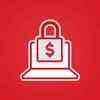Do these 3 things first to stay safe on the internet
These days, technology is more than just something you use to pass the time. It’s become a necessity for most of our lives.
From the moment we wake to the moment we close our eyes at night, we are constantly interacting and engaging with technology.
The problem is that we are now creating endless troves of data , which can be used to attack or harm us later.
While we may feel that our personal information, banking numbers, and home addresses are safe behind our usernames and passwords, you might be surprised to learn that more people have access to your data than you think .
You internet service provider, for one, has access to tons of your personal information by the very nature of their job. And, unless you have zero social networking sites, there’s a good chance Facebook, Twitter, and Instagram (to name a few) can access some of your personal information as well.
So, how can you keep your computer secure when your life is tied to so many connected services each day? These three go-to rules will help you be proactive about your online security.
Rule No. 1: Keep Everything Up-to-Date
According to AVG , more than half of all systems are running out-of-date software. For every out-of-date app or piece of software, the risk of attack doubles.
Security patches, bug fixes, and software updates are necessary for keeping a system running optimally, but it’s not just about performance. It’s also vital for security.
Windows, for instance, receives regular updates from the official dev team to fix vulnerabilities in the system.
WannaCry, one of the largest attacks ever , was possible because so many infected systems had not been kept up to date.

What is Wannacry?
Rule No. 2: Pay Attention to Email Addresses, Attachment Names, and Contacts
A common tactic for hackers is sending infected files via email. They can even come from a trusted contact. When you download the document, it installs malicious code.
Luckily, this is an easy thing to catch. Always vet contacts, emails, and attachments before opening them.
Gmail and many other email providers include integrated security processes to double check files and content for you. Don’t ignore these systems.
If an email landed in your spam folder or was flagged for any reason, even it came from a trusted contact, be wary.
The same is true when following outbound links. Phishing is a strategy in which attackers create a portal that is cloned or mirrored like a real site. You can usually identify them through the URL, which is not related to the official site URL.
Never follow links via your email if you can help it. Browse to a website directly to log in, especially for banking sites and personal accounts.
Rule No. 3: Use Encryption
Most systems and devices allow you to enable a form of encryption , which scrambles information and data. It cannot be decrypted or viewed without the appropriate authentication, known as an encryption key.
It’s also possible to open an encrypted connection — via SSL — for most sites when dealing with sensitive information.
You can check this by looking at the URL in your browser. If it starts with HTTPS, instead of just HTTP, and shows a green lock icon or something similar, the site is secure.
Nearly all professional sites have an encrypted variant that protects incoming and outgoing transmissions.

How to encrypt your hard drive and keep your folders and files safe